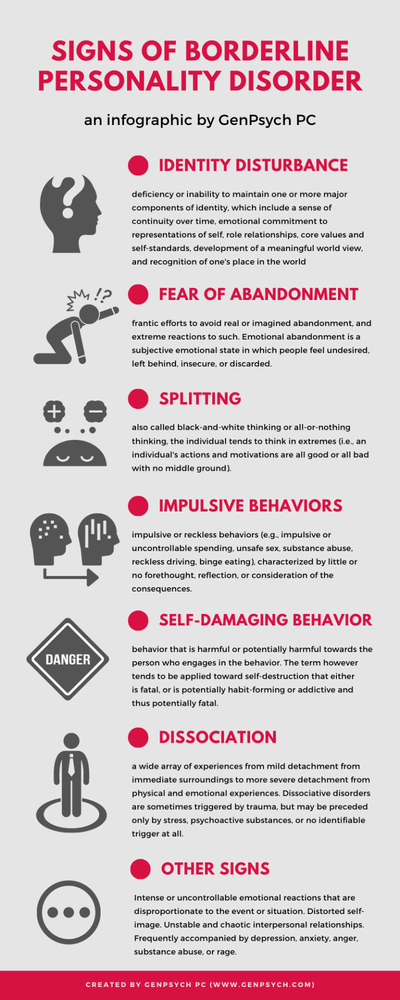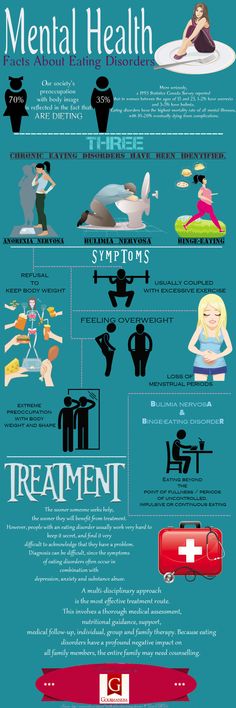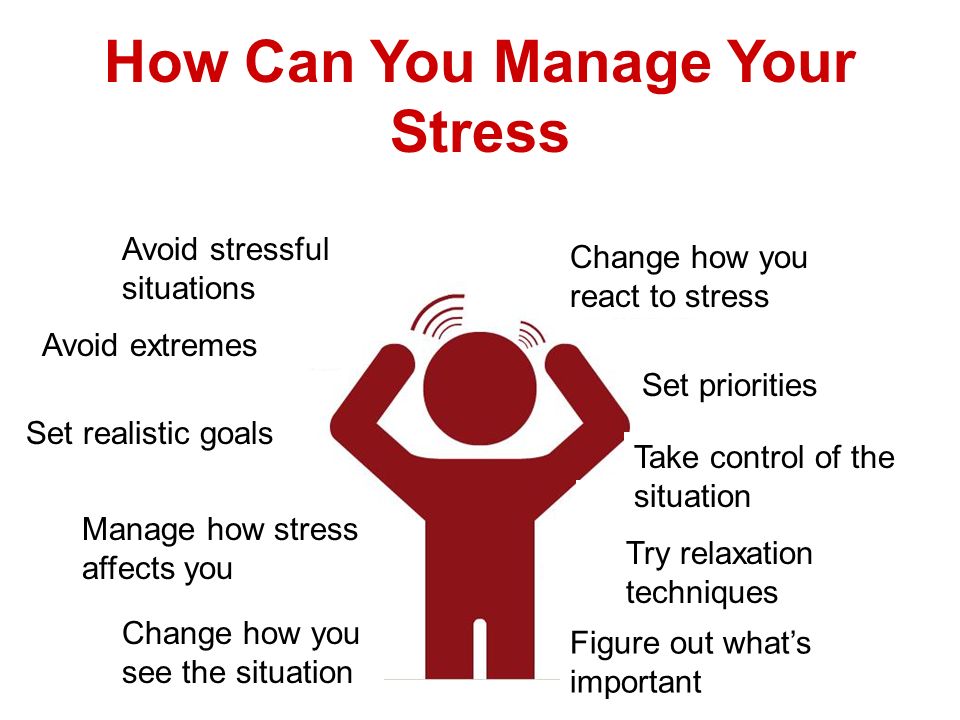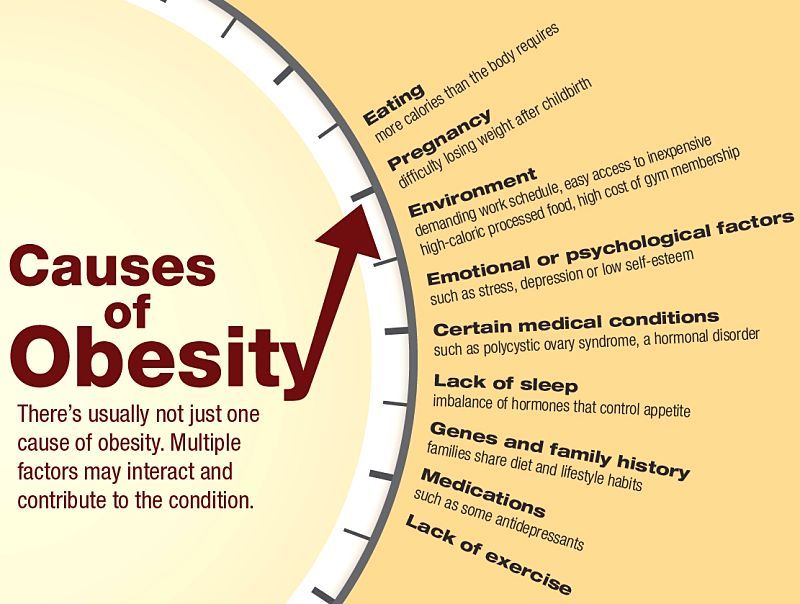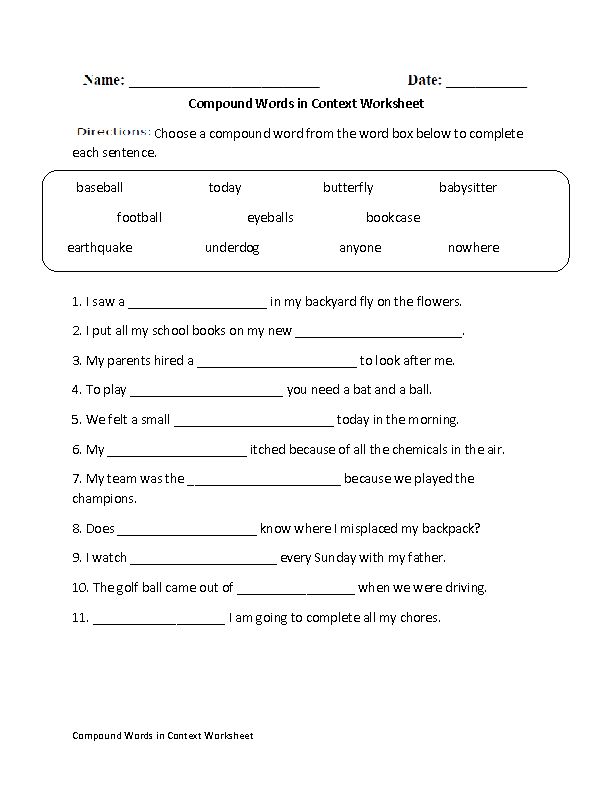Personality disorder with anger
Handling and Treating Rage in BPD
Intense and sometimes inappropriate rage is a characteristic of borderline personality disorder (BPD). A person with this condition has difficulty regulating their emotions or returning to their baseline. Extremes of rage and other intense emotions may last longer than might be expected, from a few hours to a few days.
BPD is a deeply misunderstood disorder. People who have this disorder may be labeled manipulative, selfish or clingy. Psychologist Marsha Linehan, who developed Dialectical Behavior Therapy (DBT) specifically to treat women with BPD, compares a person with BPD to a person with third-degree burns over 90 percent of their body: Because of their lack of emotional skin, the slightest touch can cause extreme agony.
For More Information About our Women’s Treatment Center
Call (855) 409-0204 Now
The Emotional Dysregulation That Characterizes BPD
Emotional dysregulation is the hallmark of BPD. This mental health disorder impacts the way a person thinks and feels about herself and others. This leads to difficulty managing emotions and behaviors and to a pattern of unstable relationships.
Usually beginning in early adolescence, a person with BPD has an overwhelming and intense fear of abandonment and may go to extremes to try to avoid separation, which may be real or imagined. Other people and situations are viewed in black-and-white terms as all good or all bad. Seemingly minor disappointments or experiences can set off wide mood swings and rage, and may also lead to self-harm or suicidal threats.
Relationships and BPD Rage
Anger that is intense, uncontrolled or inappropriate can be a devastating symptom for someone who has BPD. They may be driven by a desire to be connected to others, yet loss of emotional control frequently drives others away. In some cases, the level of rage experienced can lead to violence.
Rage in a person with BPD can occur suddenly and unpredictably, often triggered by an intense fear of being alone. Fear of rejection can be so intense that they begin to anxiously expect rejection.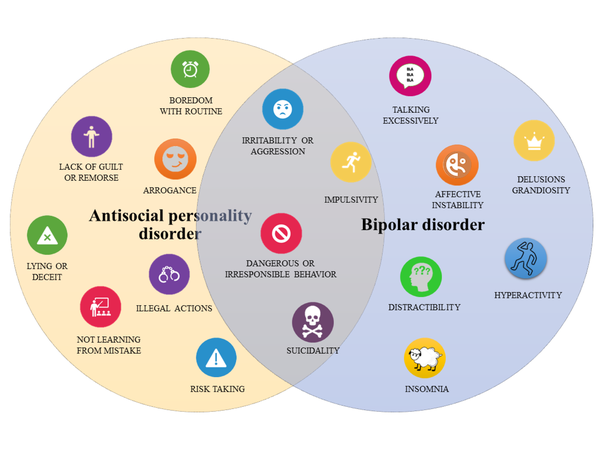 Subtle cues that they associate with rejection can set off unexpectedly intense reactions. Besides fear of rejection, a person with BPD views things and people as either extremely good or extremely bad, and their opinion of someone can quickly change from friend to enemy.
Subtle cues that they associate with rejection can set off unexpectedly intense reactions. Besides fear of rejection, a person with BPD views things and people as either extremely good or extremely bad, and their opinion of someone can quickly change from friend to enemy.
Treating Rage in BPD
BPD was once thought of as a condition that was very difficult to treat, but evidence-based therapies can help people experience reduced symptoms and improved quality of life. Psychotherapy can help a person with BPD learn to manage rage and other emotions that feel uncomfortable as well as reduce impulsivity. It’s possible to learn to observe feelings rather than act on them.
Types of therapy that have been successful in treating BPD rage include:
- Dialectical behavior therapy (DBT) – This form of treatment consists of both group and individual sessions. It attempts to reconcile apparent contradictions, specifically acceptance and change. It helps identify thoughts and beliefs that are ineffective and teaches patients how to manage emotions, improve relationships and tolerate distress.
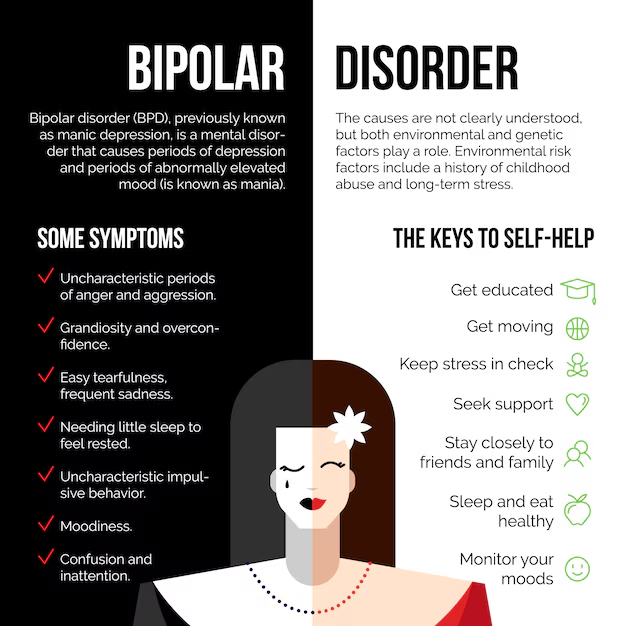
- Schema-focused therapy – This type of psychotherapy helps patients to shed their life views that aren’t working and replace them with healthier behaviors and positive life patterns. Therapy includes role-playing, guided imagery and assertiveness training.
- Transference–focused psychotherapy – This therapy works toward helping patients integrate their views of themselves and others and has been found to significantly reduce anger.
- Mentalization-based therapy – This form of therapy helps a person with BPD separate their thoughts and feelings from people around them. It emphasizes thinking before reacting.
These and other forms of treatment can help a person with BPD experience less intense rage and other symptoms. With treatment, a person with BPD can gain control of out-of-control emotions and improve their ability to function.
If you or a loved one are struggling with a borderline personality disorder or anger issues, please contact us at (855) 409-0204 or submit the form below and a treatment specialist will contact you.
Anger and Borderline Personality Disorder - Why it Happens & How to Manage It
by Dee Chan
50,555
VIEWSPeople who have BPD often have tremendous issues with anger — both expressing it and being the recipient of it. They will often go to extreme lengths to make people happy in order to avoid having people get angry at them. The flip side of that is that they themselves can go into a drop dead rage at the drop of a hat. I will examine why this happens.
Some psychiatrists believe that people have intense issues around anger because when they were children, they were not “allowed” to express it and, in some cases, told that even feeling it was somehow bad. As they grow up, they learn that anger is a “bad” thing and so learn to go to great lengths to avoid having it in their life.
If they have grown up in a setting where anger is not okay, it becomes just one more “bad feeling” they feel and they will either try to run away from it or will be so overwhelmed by it that it boils over because they do not know how to contain it.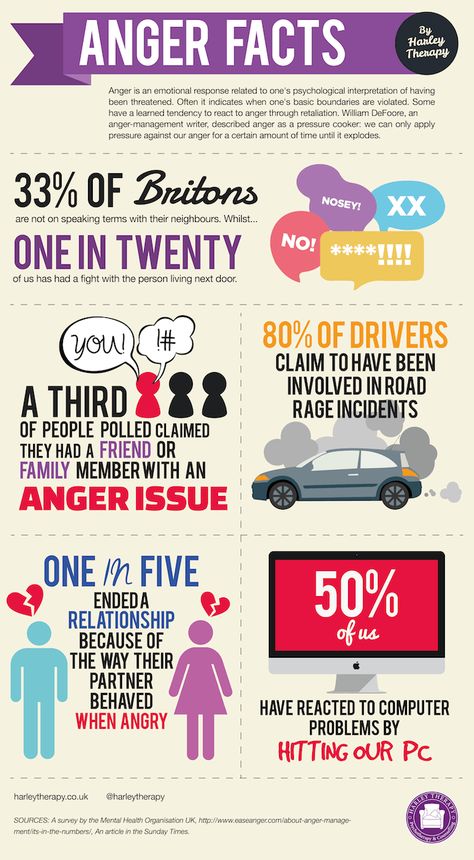 In many cases, though the person feels anger on a regular basis and engages in expressing it negatively they are unaware that they are even feeling this emotion and can not even identify it as a feeling. For them, it “just happens”. They feel victimized by it because they don’t know where it comes from or how to stop it from happening.
In many cases, though the person feels anger on a regular basis and engages in expressing it negatively they are unaware that they are even feeling this emotion and can not even identify it as a feeling. For them, it “just happens”. They feel victimized by it because they don’t know where it comes from or how to stop it from happening.
Sometimes anger can be felt more remotely in terms of low-lying irritation or annoyance which is then displaced onto other people. This is a partial explanation for why people with BPD are always “pissed off” at the world. Most people who have this kind of unaddressed anger channel it into extreme feelings of anxiety because they have to express it somehow. In some cases, it can be expressed somatically — that is as irritable bowel syndrome or extreme headaches caused by tension.
The crux of the matter here is that almost everyone is afraid of anger because we are not taught how to express it properly. Anger is simply one of many emotions. It is neither good nor bad.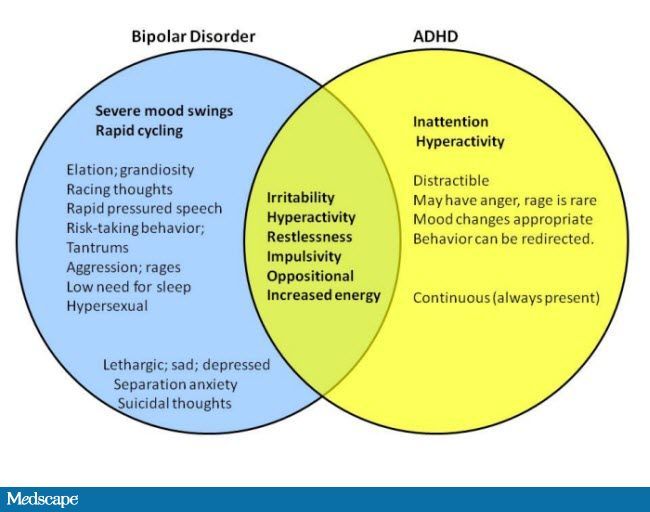 The way you choose to deal with it is what attributes a value to it. When you are able to understand and accept that anger is an emotion like so many others and that it has no power to hurt you, you will be on your way to setting yourself free. The only thing negative about anger are the consequences involved if you deal with your anger inappropriately by lashing out and yelling at people or breaking things or turn it in on yourself.
The way you choose to deal with it is what attributes a value to it. When you are able to understand and accept that anger is an emotion like so many others and that it has no power to hurt you, you will be on your way to setting yourself free. The only thing negative about anger are the consequences involved if you deal with your anger inappropriately by lashing out and yelling at people or breaking things or turn it in on yourself.
People like to say that depression is anger turned inwardly. I think depression in people with BPD is caused by years of neglect and not feeling heard, being scapegoated by the family of origin and feeling bullied. Yes, all those things can lead a person to feel angry but that anger is reactive in nature. The resulting “depression” is just the way the person with BPD chooses to express those angry feelings.
One of the ways to deal with anger issues is to learn and practice assertiveness. When you become an assertive person you learn how to stand up for yourself so you don’t get walked all over by people.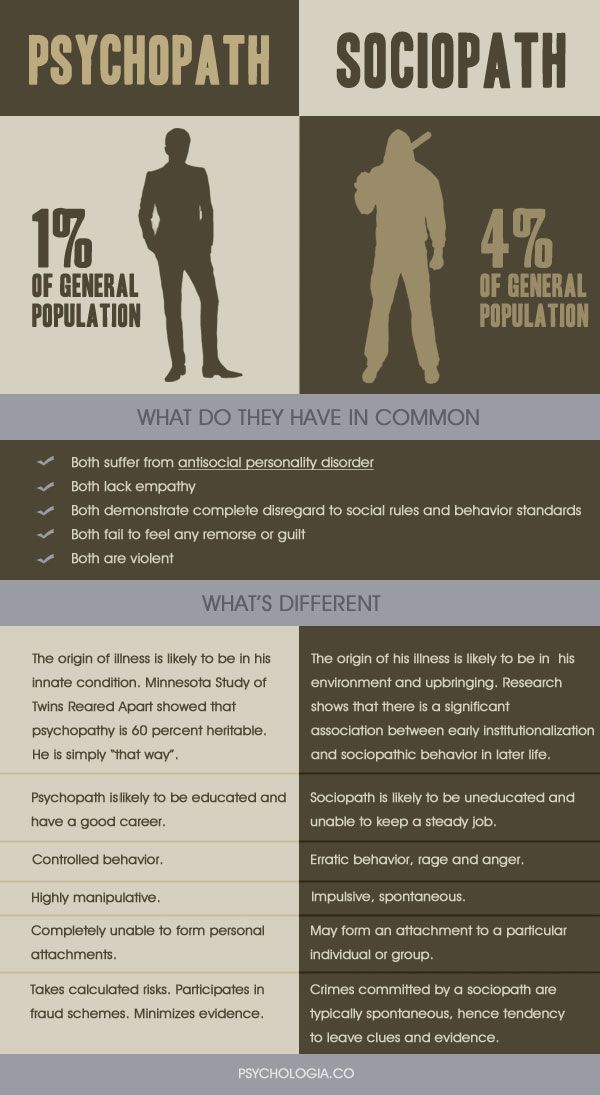 Learning how to stand up for yourself assertively allows you to have a voice so you can express yourself in a rational manner and, hopefully, be heard by the people with whom you are interacting with. It can alleviate some of the feelings of helplessness a person can feel in an intimate relationship.
Learning how to stand up for yourself assertively allows you to have a voice so you can express yourself in a rational manner and, hopefully, be heard by the people with whom you are interacting with. It can alleviate some of the feelings of helplessness a person can feel in an intimate relationship.
The other way to learn to deal with anger is to learn conflict negotiation skills. This is not for the faint of heart because it requires you to look closely at both sides of an argument and figure out what you really want rather than hiding behind what you think you want.
Another reason that a person may be afraid of anger is because they fear retaliation from the other person. They worry that the other person will abandon them if they are “not nice enough”. We are taught from childhood that “nice girls don’t “do conflict” and told to suppress our angry feelings. But the bottom line is that conflict is found in every single relationship be it an interpersonal one or a work relationship.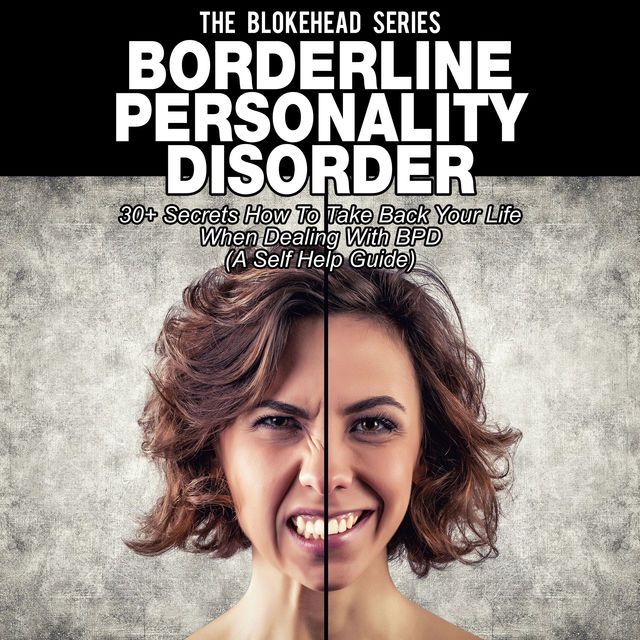 So, it is imperative that we learn how to approach conflict so that it can be productive and not confrontational.
So, it is imperative that we learn how to approach conflict so that it can be productive and not confrontational.
A third way is to learn anxiety reduction techniques such a mindfulness meditation and box breathing. In my experience, my anger was always anxiety-fueled feelings that had completely run amok. Once I learned how to get better control over my anxiety, my anger levels began to diminish.
Being able to express anger in an assertive, productive manner will help your relationships a great deal. As with all things related to BPD, one of the first steps in recovery is learning to take responsibility for your feelings, words and actions. Without that component you will stay stuck.
[irp posts=”6667″ name=”Recovering from Borderline Personality Disorder Means Learning To Change The Way You Think (by Dee Chan)”]
About the Author: Dee Chan
Dee Chan was diagnosed with BPD more than 35 years ago back when the diagnosis was still fairly new and not very well understood. She has been living with it and coping with it ever since and finding ways to thrive despite it. She has been able to put it into complete remission and turned her life around completely through the practices of gratitude, forgiveness and accountability. Find out more about Dee’s work on her website bpdnomore.com.
She has been living with it and coping with it ever since and finding ways to thrive despite it. She has been able to put it into complete remission and turned her life around completely through the practices of gratitude, forgiveness and accountability. Find out more about Dee’s work on her website bpdnomore.com.
Emotional personality disorder - treatment and rehabilitation at the Allianz Central Medical Health Center
Emotionally unstable (labile) personality disorder is hyperexcitability, impulsivity, low ability to self-control and emotional imbalance. Like other personality disorders, it is more of a character pathology ("severe character") rather than a disease. An experienced psychotherapist can help with the disorder.
Important
"Severe character", the inability to cope with one's emotions is a reason to seek help from a psychotherapist. nine0003
In another way it is called aggressive, epileptoid, excitable, explosive personality disorder.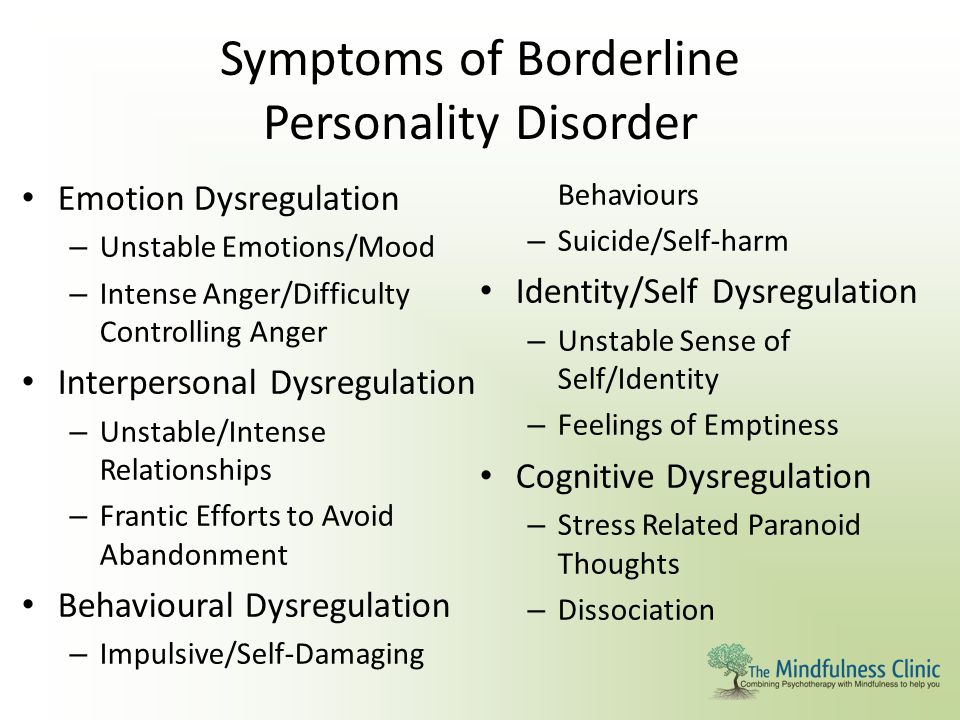 Sometimes doctors treat it as two separate disorders—impulsive personality disorder and borderline personality disorder.
Sometimes doctors treat it as two separate disorders—impulsive personality disorder and borderline personality disorder.
A common feature of people with both variants of emotionally unstable personality disorder is that it is difficult for them to restrain themselves, obey norms and rules due to weak self-control and impulsivity. Character traits make it difficult to establish and maintain contacts with others. Treatment by a psychotherapist for such people is an opportunity to accept the peculiarities of their psyche and learn to live in harmony with others. nine0003
Symptoms of epileptoid personality disorder
If we talk about the classification of emotionally unstable personality disorder, ICD-10 divides it into two subspecies:
- Impulsive.
- Border.
An emotionally unstable personality disorder of the impulsive type is characterized by severe emotional lability (frequent unreasonable mood changes), a tendency to impulsive acts and aggressive outbursts with an inability to restrain.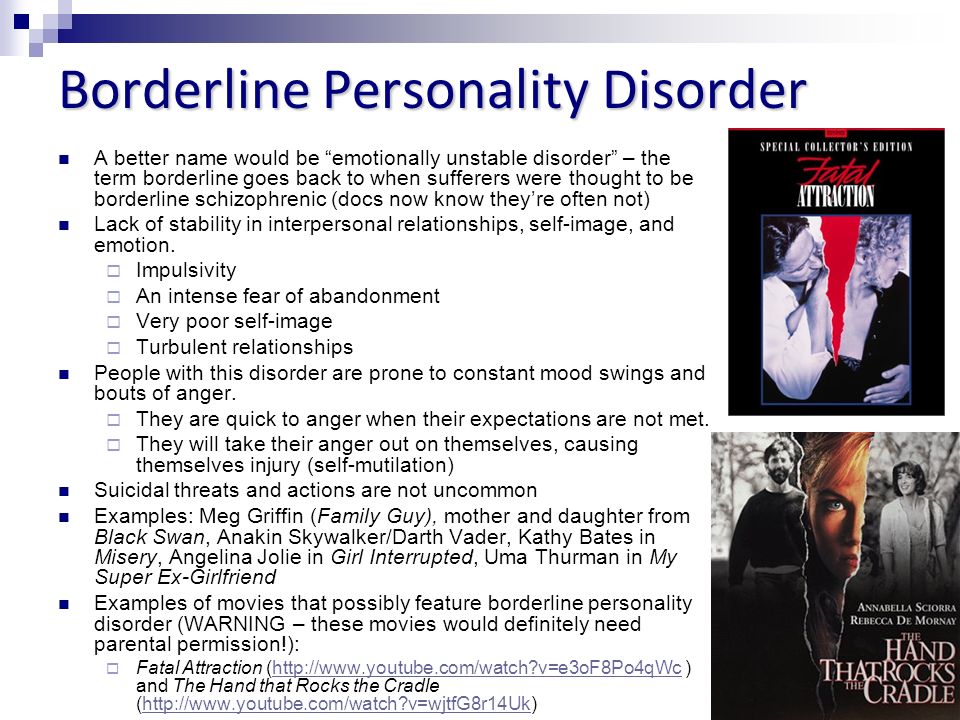 People with this disorder have a hard time with criticism and censure. nine0003
People with this disorder have a hard time with criticism and censure. nine0003
Epileptoids are characterized by jealousy, suspicion, manipulation, irritability and outbursts of anger.
For an emotionally unstable personality disorder of the borderline type, aggressive behavior towards others is less characteristic, but such people are prone to self-harm, up to suicidal acts. Learn more about borderline disorder.
According to ICD-10, a disorder is characterized by common features of a personality disorder and specific features. The general criteria are as follows: nine0003
- begins to appear in childhood and adolescence, persists into adulthood;
- it is difficult to distinguish clear phases of recovery/exacerbation;
- character traits make it difficult to communicate with relatives and strangers, do not allow to take place professionally;
- a person is often self-centered, incapable of empathy (sympathy for other people), constantly striving for pleasure.
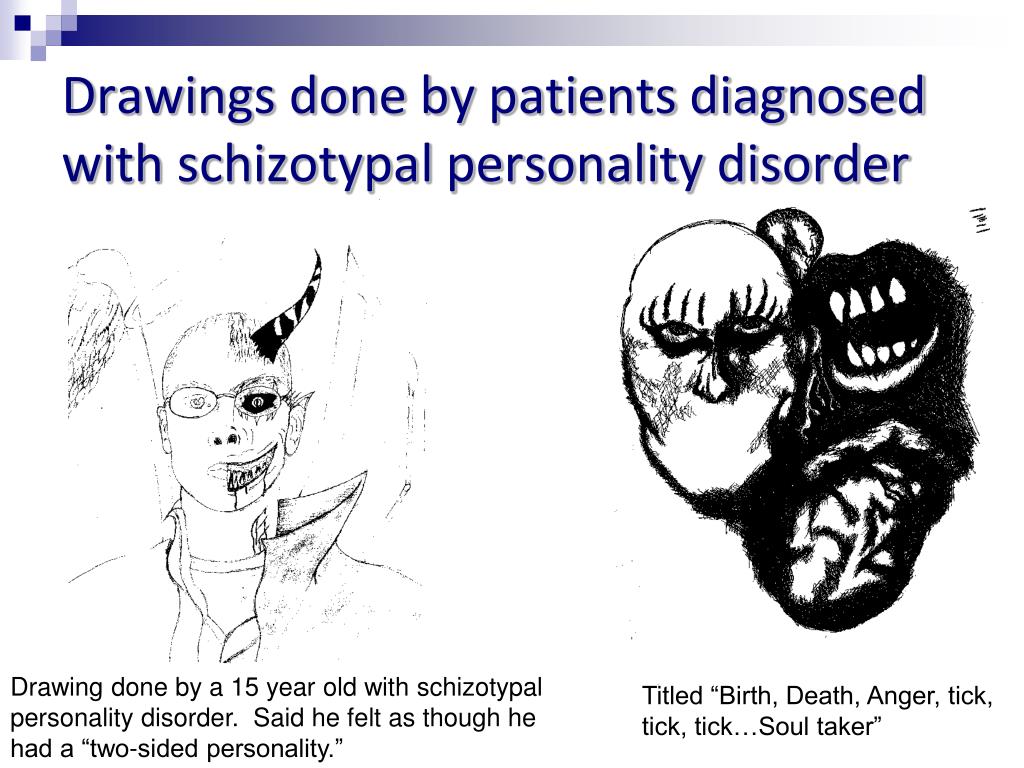
Specific symptoms of the impulsive (explosive) type of emotionally unstable personality disorder: nine0003
- Impulsivity in thoughts and actions.
- Low ability to self-control.
- Outbursts of anger.
- Tendency to cruel and asocial acts.
- Intolerance to censure and criticism.
To diagnose the impulsive type of emotionally unstable personality disorder, the psychotherapist talks in detail with the client.
Differential diagnosis is carried out with other personality disorders (borderline, hysterical), as well as with epilepsy. For this, a pathopsychological study is used (performed by a clinical psychologist), EEG, Neurotest. nine0003
An integrated approach to diagnosis is necessary so that the doctor can prescribe the most effective treatment for this person.
Emotionally unstable personality disorder - treatment
People with emotionally unstable personality disorder are especially in dire need of the help of a psychotherapist.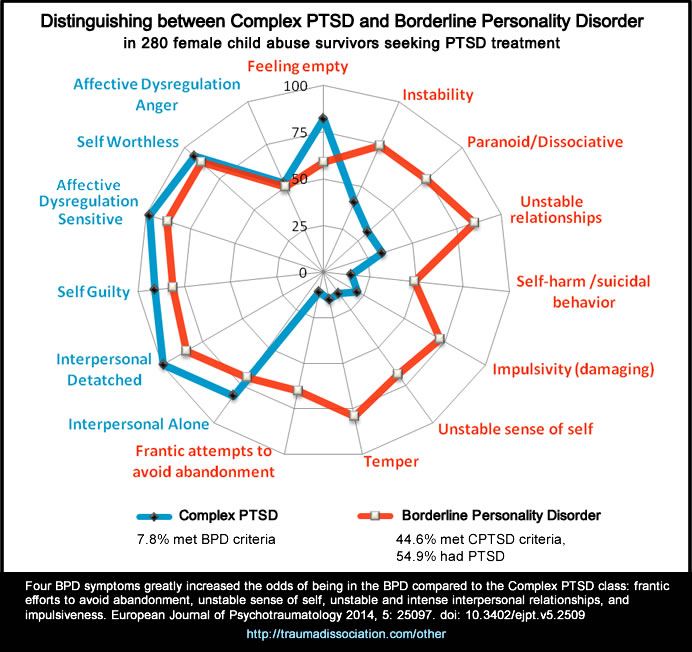 A specialist can teach them to control their emotions and prevent the negative impact of emotional outbursts on others (with impulsive disorder) and on the person himself (with borderline personality disorder). nine0003
A specialist can teach them to control their emotions and prevent the negative impact of emotional outbursts on others (with impulsive disorder) and on the person himself (with borderline personality disorder). nine0003
Labile personality disorder is described as one of the most difficult diagnoses to treat. Establishing contact with a person who suffers from an emotionally unstable personality disorder is not an easy task for a psychotherapist. Inexperienced professionals avoid a strong alliance with such patients so as not to lose their own peace of mind.
But at the same time, it is important to remember that a personality disorder is not a disease, the patient does not have damage to the nervous system. Therefore, with proper treatment, it achieves serious positive results. People with borderline and aggressive personality disorders should be treated by an experienced psychotherapist. nine0003
Important
Psychotherapy is the main non-drug treatment for mental disorders.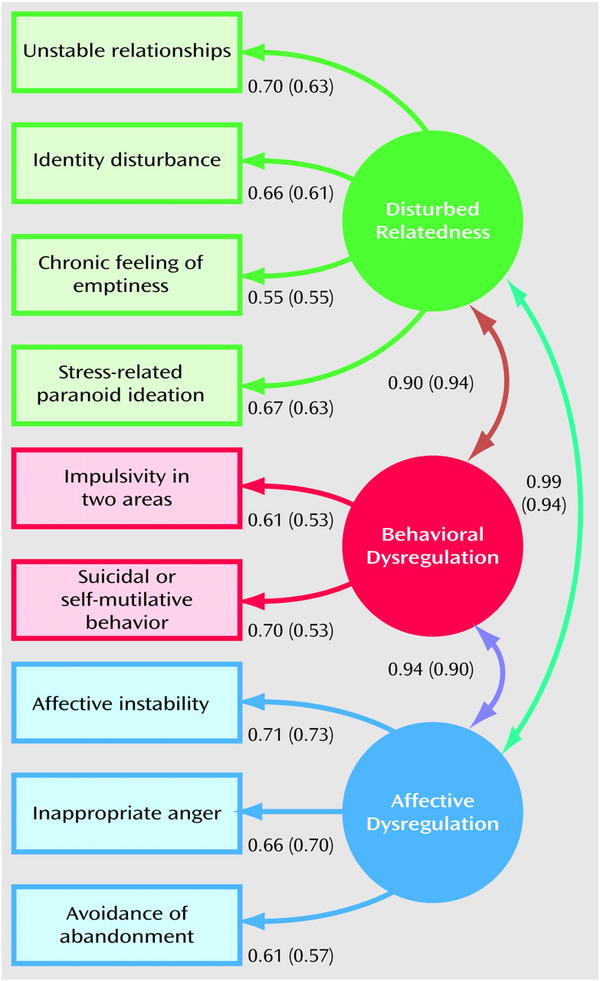 Unlike medicines that eliminate symptoms, it works with the cause - it allows you to achieve a long-term, lasting result.
Unlike medicines that eliminate symptoms, it works with the cause - it allows you to achieve a long-term, lasting result.
The main treatment for emotional personality disorder is psychotherapy. Drug treatment is not used in all cases. Medication support may sometimes be needed if the personality disorder is co-occurring with other illnesses, such as depression. nine0003
The most effective techniques when working with people who suffer from emotionally labile personality disorder are cognitive behavioral therapy and dialectical behavioral therapy. They help patients become aware of the thoughts and feelings that influence their actions and teach them to control themselves.
Subject to all the recommendations of the doctor and, most importantly, the desire of the patient to interact with the psychotherapist, the therapy gives a lasting positive effect. At the same time, the specialist does not seek to change the patient's personality, but helps to accept oneself and learn to live in harmony with oneself and others.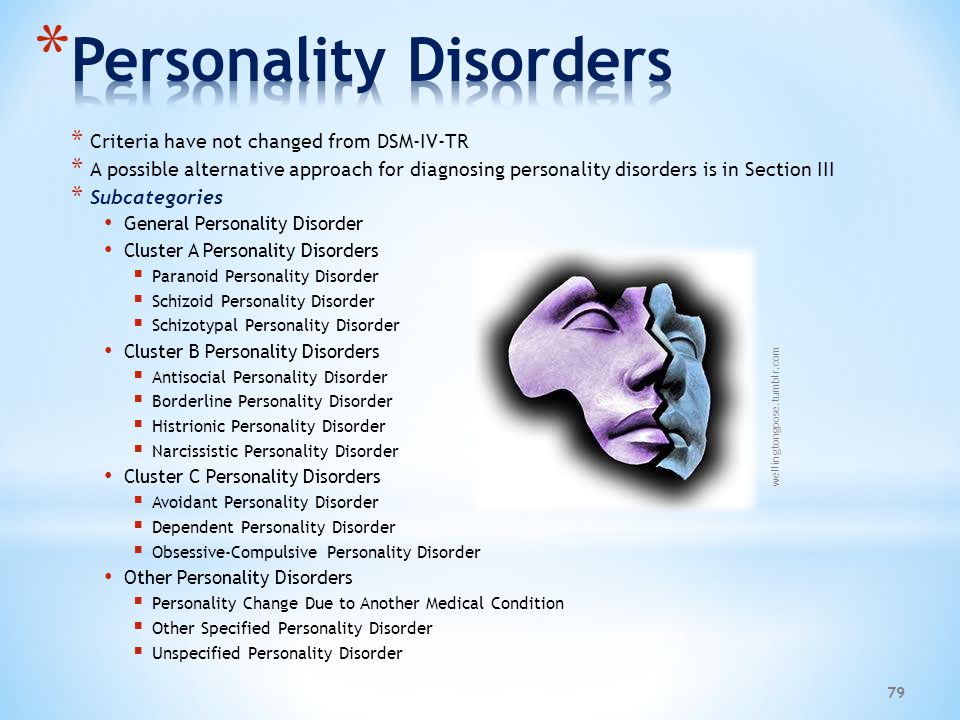 nine0003
nine0003
FGBNU NTsPZ. ‹‹Borderline mental disorders››
The pathocharacterological properties that unite this group of personality disorders are impulsiveness with a pronounced tendency to act without regard for consequences and a lack of self-control, combined with mood instability and violent affective outbursts that occur at the slightest provocation. There are two types of this variant of personality disorders - impulsive and borderline.
Impulse type corresponds to excitable psychopathy. Psychopathy of this type, as E. Kraepelin points out, is characterized by unusually strong emotional excitability. Its initial manifestations are found even in preschool age. Children often scream and get angry. Any restrictions, prohibitions and punishments cause them violent reactions of protest with malice and aggression. In the lower grades, these are “difficult” children with excessive mobility, unbridled pranks, capriciousness and touchiness. Along with irascibility and irritability, they are characterized by cruelty and gloom. They are vindictive and quarrelsome. Early revealed tendency to a gloomy mood is combined with periodic short-term (2-3 days) dysphoria. In communicating with their peers, they claim leadership, try to command, establish their own rules, which often causes conflicts. Most of the time they are not interested in learning. They are not always kept at school or vocational schools, and once they start working, they soon leave. nine0003
The formed psychopathy of the excitable type is accompanied by bouts of anger, rage, affective discharges, sometimes with an affectively narrowed consciousness and a sharp motor excitation. In temper (especially easily occurring during alcoholic excesses), excitable individuals are able to commit rash, sometimes dangerous actions. In life, these are active, but incapable of long-term purposeful activity, uncompromising, tough people, with vindictiveness, with viscosity of affective reactions. Among them, there are often people with disinhibition of drives, prone to perversions and sexual excesses.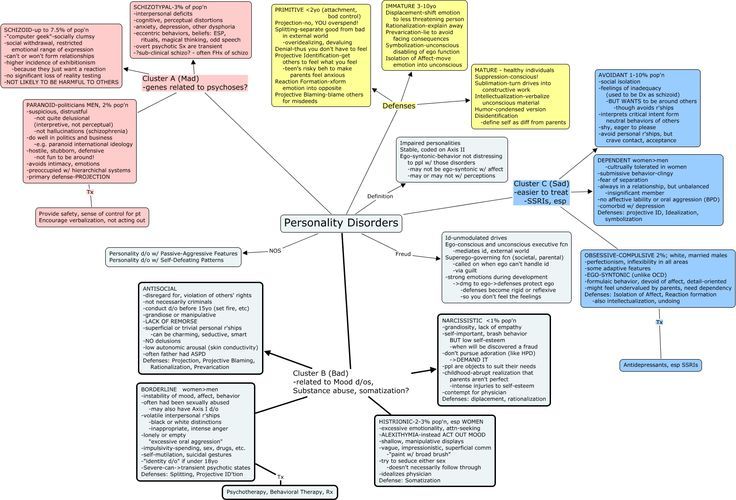 nine0003
nine0003
The subsequent dynamics of excitable psychopathy, as shown by the works of V. A. Guryeva and V. Ya. Gindikin (1980), is heterogeneous. With a favorable course, psychopathic manifestations are stabilized and even relatively fully compensated, which is largely facilitated by the positive influences of the environment and the necessary educational measures. Behavioral disturbances in such cases by the age of 30-40 are significantly smoothed out, and emotional excitability gradually decreases. However, a different dynamic is possible with a gradual increase in psychopathic features. Disorderly life, inability to restrain impulses, joining alcoholism, intolerance to any restrictions, and finally, a tendency to violent affective reactions serve in such cases as the causes of a long-term violation of social adaptation. In the most severe cases, acts of aggression and violence committed during affective outbursts lead to a collision with the law. nine0003
The borderline type has no direct analogues in the domestic systematics of psychopathy, although in some personal parameters it is comparable to the unstable type of psychopathy. Borderline personality disorder overlaps with other personality disorders - primarily hysterical, narcissistic, dissocial [Harrison G., Pope U. G. et al., 1983], needs to be differentiated from schizotypal disorder, schizophrenia, anxiety-phobic and affective disorders (see. description of the dynamics of borderline personality disorder). nine0003
The borderline personality is distinguished by increased impressionability, affective lability, vividness of imagination, mobility of cognitive processes, constant "inclusion" in events related to the sphere of current interests or hobbies, extreme sensitivity to obstacles on the way to self-realization, functioning at the maximum of possibilities. Difficulties in the sphere of interpersonal relations, especially the situation of frustration, are also perceived sharply. The reactions of such subjects even to trivial events can acquire an exaggerated, demonstrative character. As emphasized by M. Smiedeberg (1959), they too often experience those feelings that are usually found only in a situation of stress.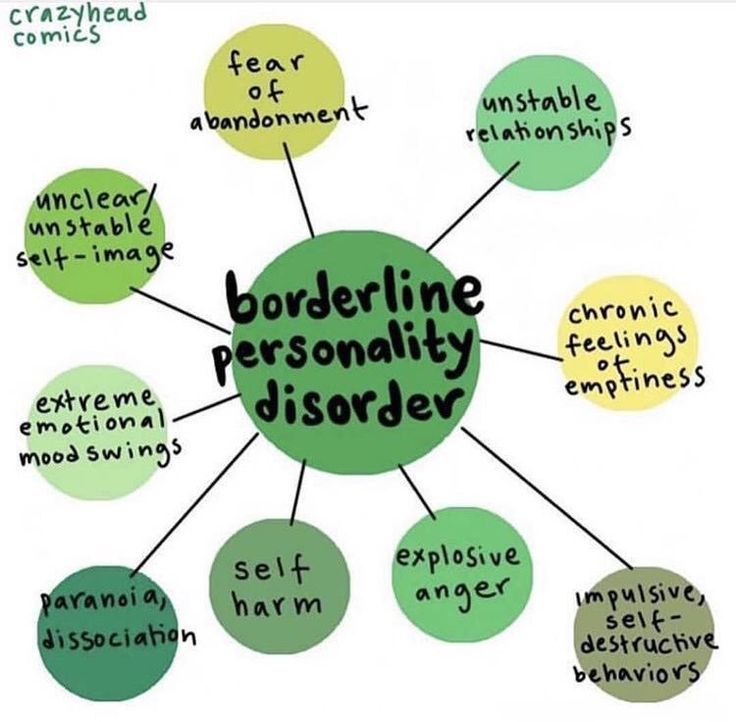
The initial pathocharacterological manifestations (emotional lability, suggestibility, a tendency to fantasies, a quick change in hobbies, instability in relationships with peers) are found already in adolescence. These children ignore school rules and parental prohibitions. Despite good intellectual abilities, they do not do well, because they do not prepare for classes, get distracted in class, and reject any attempts to regulate their daily routine. nine0003
The distinctive properties of borderline personalities include the lability of self-esteem, the variability of ideas about both the surrounding reality and one's own personality - a violation of self-identification, the inconstancy of life attitudes, goals and plans, the inability to resist the opinions of others. Accordingly, they are suggestible, susceptible to external influences, easily adopt forms of behavior not approved by society, indulge in drunkenness, take stimulants, drugs, they can even acquire criminal experience, commit an offense (most often we are talking about petty fraud).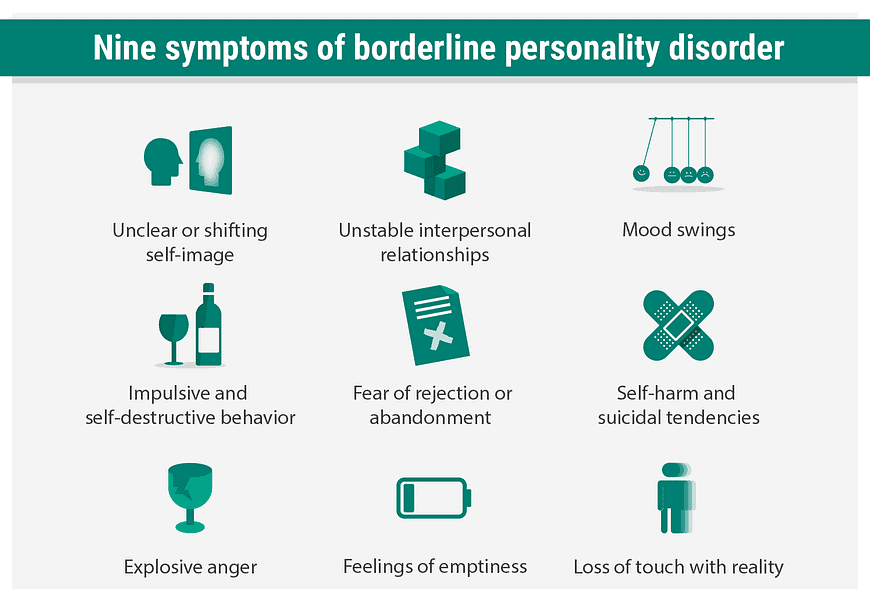 nine0003
nine0003
Borderline psychopaths easily fall into dependence on other, sometimes unfamiliar people. Approaching, they quickly form a complex structure of relationships with excessive subordination, hatred or adoration, the formation of overvalued attachments; the latter serve as a source of conflict and suffering associated with the fear of separation and impending loneliness, and may be accompanied by suicidal blackmail.
The life path of borderline individuals seems to be very uneven, replete with unexpected turns in the social route, family status. Periods of relative calm are replaced by all sorts of collisions; easy transitions from one extreme to another - this is a sudden love that overcomes all obstacles, ending in an equally sudden break; and passion for a new business with objectively high professional success, and a sudden abrupt change of job after a minor industrial conflict; it is also wanderlust leading to relocation and progression. However, despite all the upheavals of life, these people do not lose their sanity when in trouble, they are not as helpless as they might seem, they can find an acceptable way out of the situation at the right time.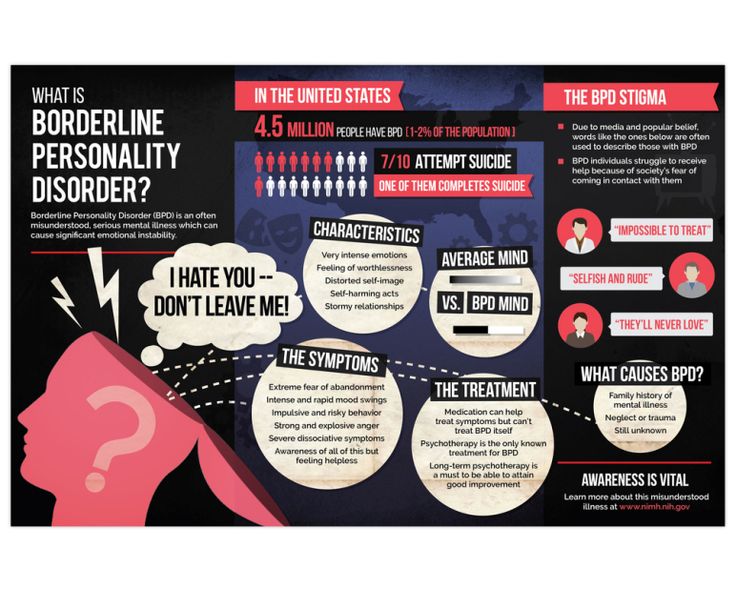 The "zigzags" of behavior inherent in most of them do not prevent a fairly good adaptation. Easily adapting to new circumstances, they retain their ability to work, find work, arrange a new life [McGlashan T. N., 1986].
The "zigzags" of behavior inherent in most of them do not prevent a fairly good adaptation. Easily adapting to new circumstances, they retain their ability to work, find work, arrange a new life [McGlashan T. N., 1986].
Within the framework of the dynamics of borderline personality disorder, phases that are erased, not accompanied by manifest affective symptoms, are observed, unfolding mainly in the autopsychic sphere. Long periods of recovery with increased activity, a sense of optimal intellectual functioning, a heightened perception of the surrounding life can be replaced (most often due to psychogenic or somatic - pregnancy, childbirth, intercurrent illness - provocation) dysthymic phases. In these cases, complaints about a decrease in mental capabilities, a feeling of incompleteness of feelings and cognitive functions, and in more severe cases, the phenomena of mental anesthesia are brought to the fore in the clinical picture in these cases. nine0003
Among other pathological reactions, judging by the descriptions of J.